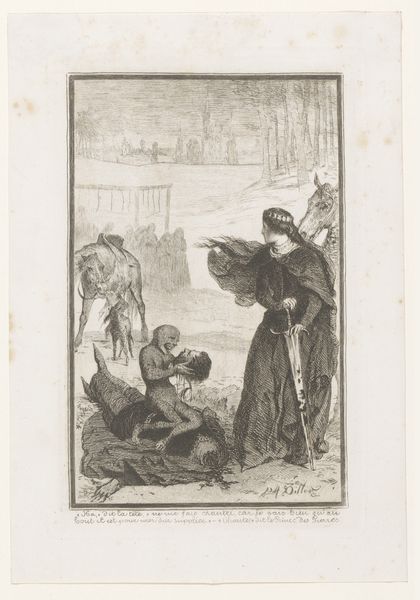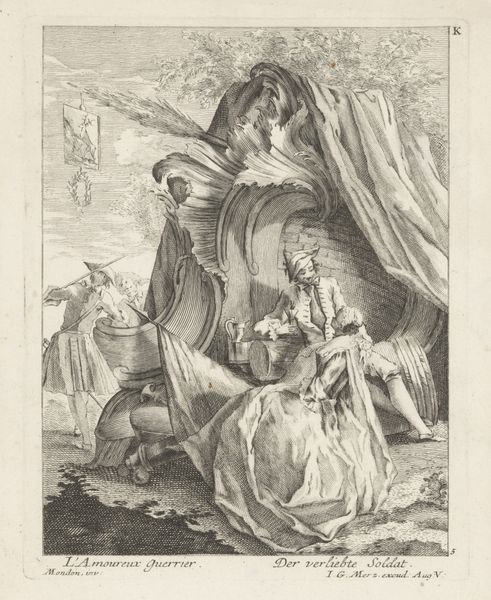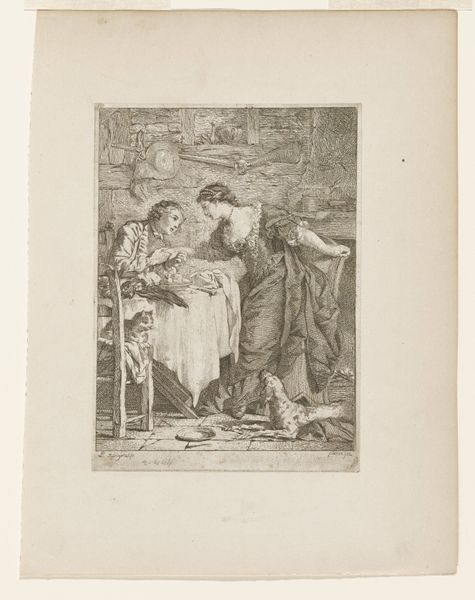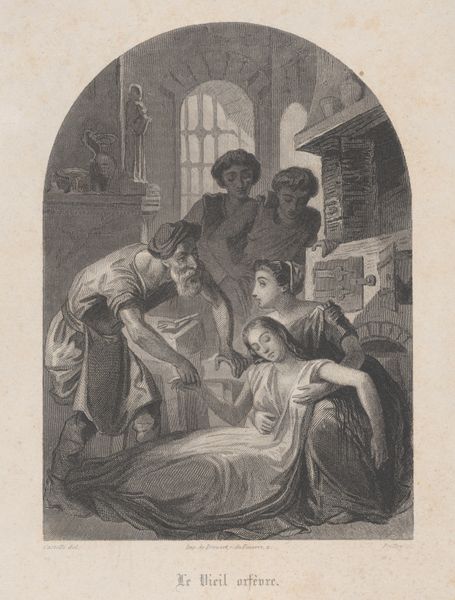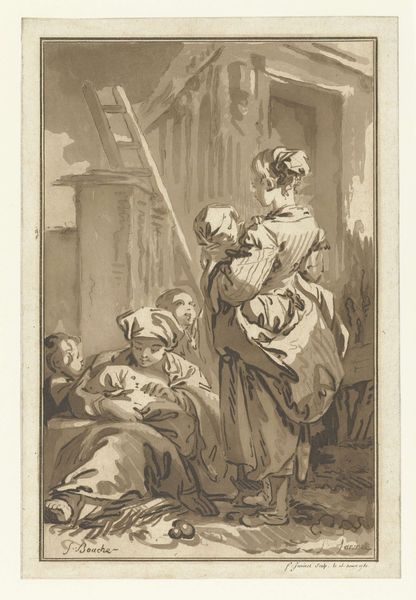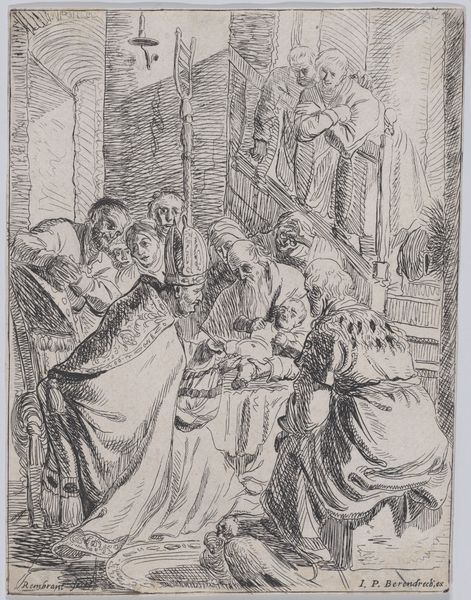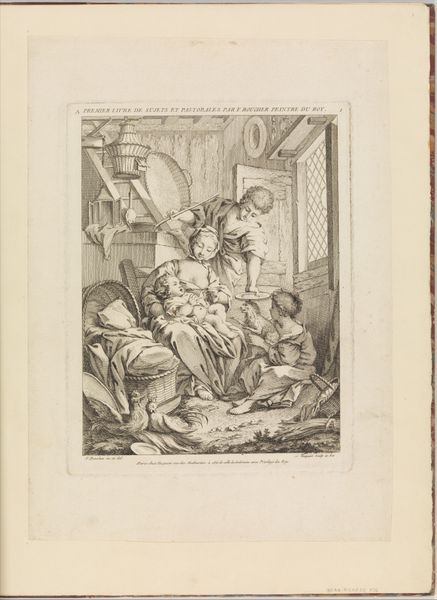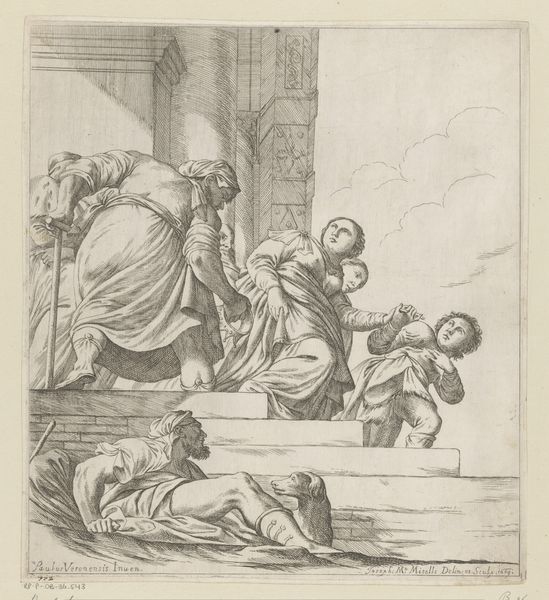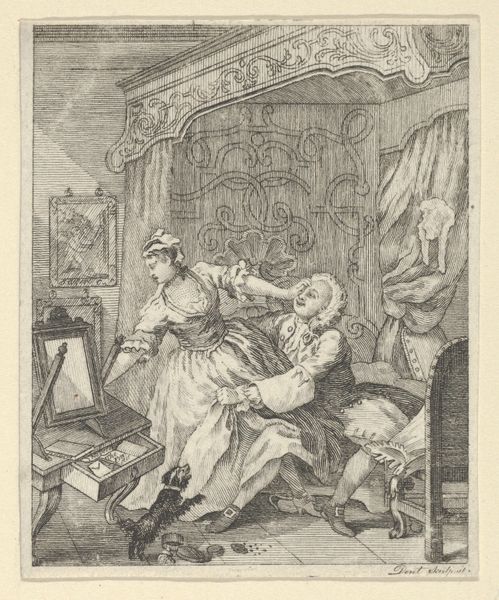
drawing, print, engraving
#
drawing
#
narrative-art
# print
#
landscape
#
figuration
#
romanticism
#
history-painting
#
engraving
Dimensions: Block: 8 9/16 x 5 3/4 in. (21.8 x 14.6 cm) Sheet: 10 11/16 x 7 1/2 in. (27.1 x 19.1 cm)
Copyright: Public Domain
Curator: Looking at this 1845 print, "Death of Goetz von Berlichingen" by Eugène Delacroix, I'm struck by the immediate sense of melancholy. The swirling lines create an almost oppressive atmosphere. Editor: Yes, there’s an undeniable somber tone evoked here. The image is filled with figures overcome by grief, their postures communicating a deep sense of loss. Let’s unpack this through the lens of Goetz’s role within his socio-political moment. Curator: Exactly. Delacroix presents a crucial moment, illustrating the death of Goetz von Berlichingen. Goetz, the 16th-century German knight, became a symbol of resistance against imperial authority. The play by Goethe turned Goetz into a national hero, a figure exploited by nationalists in the 19th century. His story touches upon questions of social mobility, rebellion, and the plight of the individual against systemic power, resonating in a world rife with inequality and injustice. Editor: It is really palpable, all of this in the iconography that is deployed. Delacroix has given us this older, bearded figure, perhaps a symbolic father of the German people, propped up by the younger generation, overcome with emotion, looking in despair as the life drains from this central figure. Their tears really jump out! The townscape or fortress is looming over this intimate group, reinforcing themes of memory and nationalism through a symbolic image, very consistent with the cultural production from this era in European history. Curator: I would also note how this rendering sidesteps a glorified militaristic view often accompanying narratives of heroism and instead, poignantly displays the vulnerability and human cost intertwined with social upheaval. He has stripped him of his armor, or other common depictions of battle, making Goetz relatable, evoking empathy across socio-political strata. Editor: That is right. His expression certainly contributes to a larger reading about German cultural identity at the time, particularly around how they understood masculine stoicism and nationalistic fervor, all distilled into symbolic image. Curator: Well, I hope this look at "Death of Goetz von Berlichingen" has shed light on both its art historical context and its potential to speak to current socio-political conversations. Editor: Indeed! What seemed to be a straightforward image of death reveals layer upon layer of cultural significance, highlighting both personal and political loss.
Comments
No comments
Be the first to comment and join the conversation on the ultimate creative platform.

